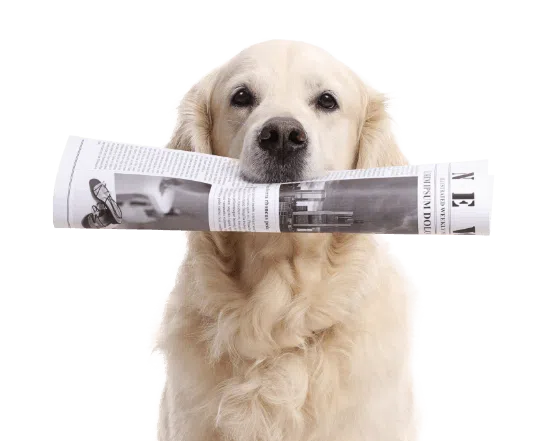Several tools and technologies are developed and used to detect the underlying problem with a pet’s health issue. X-ray is one of the necessary forms of diagnostic imaging tools when it comes to checking if there are any internal issues with our pets. Aside from being versatile, X-rays provide a simple and non-invasive method to diagnose the underlying condition. In the past, veterinarians relied on traditional X-ray machines to diagnose pets with health issues such as fever, breathing difficulties, and coughing. However, these machines had certain limitations. With technological advancements, digital radiology has begun to replace traditional X-ray machines. The advantages of digital radiology are that it provides more precise results, enabling veterinarians to make accurate diagnoses and treat pets more effectively. According to a report, the global market for veterinary imaging, which includes digital radiography, is expected to reach $2.4 billion by 2024.
So what is digital radiology, and what makes it better than traditional X-ray veterinary machines?
What is Radiography?
Radiography refers to using X-rays to produce images of the internal structures of animals for diagnostic purposes. It is a common diagnostic tool veterinarians use to help identify and diagnose various animal conditions, including bone fractures, dental problems, tumors, and other internal injuries or abnormalities.
During a radiographic examination, the animal is placed on a special table or held in position by a veterinary technician or veterinarian. The X-ray machine is positioned to direct a radiation beam through the animal’s body onto a film or digital sensor. The resulting image shows the density of the animal’s internal structures, including bones, soft tissues, and organs.
Interpreting the radiographs requires specialized training and expertise, and veterinarians use the images to diagnose conditions that may not be visible from the outside. Radiography is a valuable diagnostic tool in veterinary medicine and can help veterinarians develop treatment plans and monitor treatment progress.
What is the traditional x-ray veterinary machine?
The conventional X-ray veterinary machine is an older form of X-ray technology, also called film-based X-rays, that creates images like photographs. The machine directs X-rays at the animal using a specialized device, and a photographic film captures the resulting images. The veterinarian then examines these images to diagnose the animal’s condition and develop a suitable treatment plan.
How does it work?
In conventional radiography, a beam of X-rays is created and directed through the animal’s body onto a film or radiation detector, resulting in an image. The X-rays pass through various soft tissues in the animal’s body, and different tissues absorb the X-ray photons to varying degrees. The denser the tissue, the more opaque or white the image appears. The density range can vary from the bone cortex, muscle, fluid, fat, air, and gas, from the densest to the least dense.
There are two variations in traditional X-ray veterinary machines:
- Contrast studies
- Fluoroscopy
Contrast Studies: If the adjacent tissues are similar, a radiopaque agent is added to one structure or another to help differentiate it from the surroundings. Some structures requiring a contrast agent include blood vessels, gastrointestinal, biliary, and genitourinary tracts lumina. Sometimes gas is also used to distend the gastrointestinal tract and make it visible.
Fluoroscopy: It involves continuously shooting X-ray beams to get a real-time image of the structure and the object. It can be used to find the motion of the diaphragm and bones and joints in real-time.
Limitations of traditional X-ray veterinary machine
Bad Resolution
Since this involves manual processing, the possibility of the resolution needing to be clearer or the density of the radiograph being low is high. Fragile images are a common problem with traditional X-ray machines. The resolution of these machines is not high enough to capture the subtle details in fragile bones or organs. This can lead to diagnostic errors and unnecessary treatments. This requires a re-shoot or retake, which not only results in a wastage of time but hinders the staff’s productivity since they have to work on one subject multiple times.
Need for More Information
Traditional X-ray machine provides incomplete information. Since conventional X-ray machines use a single X-ray source and a single image receptor, it can result in blurring of the image. In addition, traditional X-ray machines often have a limited field of view, making it difficult to see all of the structures in the body. This is because you can only take a single shot per taking, which results in multiple images of the same object being taken over until the whole area is covered. This leads to missing parts of the body, which can result in misdiagnosis or irrelevant treatment, thus risking the pet’s health.
Resource Wastage
Traditional X-ray machines require extreme physical activities, which means the radiologist has to move back and forth to ensure that there is not too much X-ray exposure to the pet.
Use of Chemicals
There are several limitations to traditional X-ray machines, including the use of chemicals. Chemical X-rays are harmful to pet tissue and can cause cancer. They are also expensive and require special training to operate. Additionally, they can only be used on certain materials, such as metals.
Requires Storage Space
One of the substantial limitations of traditional X-ray machines is that they require significant storage space. This can be an issue for healthcare facilities with limited space or cannot accommodate the larger size of these machines. Additionally, traditional X-ray machines may require special ventilation and cooling systems to prevent overheating, which can also add to the overall cost of ownership.
Radiation Exposure
Another limitation of traditional X-rays is that they expose animals and veterinary staff to potentially harmful radiation. While steps can be taken to minimize radiation exposure, such as wearing protective gear and limiting the duration and frequency of X-ray exams, there is still a risk of radiation exposure. Besides damaging the cells from within, excessive X-rays can cause skin burns and increase the possibility of cancer.
Processing Error
This is one of the most significant limitations of traditional X-ray machines. When X-rays are done manually, it can result in errors like scratches on the film or the film contrast being too high or low. Furthermore, since X-ray film has a limited linear response, underexposure or overexposure to X-ray can result in an incorrect image.
Time-Taking
Once a radiograph image is created, processed, and viewed, it can not be changed. Since you can not fix any errors in the image, you need to retake the X-ray. This leads to a waste of time. Furthermore, this increases the possibility of overexposure to X-rays on the radiologist and the pets, thus making them vulnerable to several health conditions.
What is digital radiology?
The healthcare industry has significantly benefited from technology, particularly in the timely detection and effective treatment of medical issues. One such technology is the digital X-ray machine, which can accurately diagnose and treat pets. Digital X-rays have become increasingly common in medical imaging due to their advanced analysis capabilities. These machines provide digital radiographic images that can be viewed immediately on a computer.
How does digital X-ray machine work?
Digital X-ray machines use a digital X-ray sensor to convert the X-rays into electrical impulses. The digital X-ray sensor is a small, flat panel placed behind the patient. The electrical impulses are then sent to a computer, which reconstructs the image of the patient’s body onto a screen. While the digital X-ray machine process is similar to the traditional ones, the digital X-ray machine uses digital sensors instead of using photographic film to capture the images.
What are the advantages of Digital Radiology over traditional X-rays in veterinary machines?
Enhanced image quality
The most significant advantage of digital radiology is the capability to view and modify images instantly. Additionally, digital radiography enables image manipulation and produces higher-quality images than traditional X-rays, which can assist in diagnosing complex medical conditions.
Lesser radiation exposure
Digital radiography has less radiation than traditional X-ray machines because it uses a different type of detector to capture the X-ray image. In conventional X-ray machines, the image is captured on a film, which requires a higher dose of radiation to produce a clear picture. However, digital radiography uses a digital detector that is more sensitive to X-rays, allowing it to capture a clear image using a lower radiation dose.
Cost-effective
Another advantage of digital radiology is that it eliminates the need for film and chemicals required for traditional X-ray machines, reducing the cost of supplies and equipment maintenance. With digital radiography, images are stored and retrieved electronically, reducing the need for physical storage space and minimizing the risk of lost or damaged films. The elimination of supplies, reduction in retakes and additional exposures, higher-quality images, and increased efficiency make digital radiography more cost-effective than traditional X-ray machines.
Fewer retakes
Digital X-rays allow the vet to see the image immediately and make any necessary adjustments. This can save time and money and reduce stress for both the vet and the animal.
Reduced space requirement
Digital radiography requires less space than traditional X-ray machines. The digital unit is smaller, and the image is stored electronically, so there is no need for film storage. This can free up valuable space in your clinic.
No chemical processor
Digital radiography doesn’t require film or chemicals, so there’s no need to worry about disposal or storage.
Faster processing time
Digital radiology provides instant image acquisition, meaning veterinarians can view and analyze images immediately. This can result in faster diagnoses and treatment planning, ultimately leading to better outcomes for animals.
Better care
Digital radiography produces images that are of much higher quality than traditional X-rays. This means veterinarians can better look at the problem area and diagnose it more accurately. Digital radiography also allows for more accessible storage and sharing of images, which is vital for consultation with other specialists. Overall, digital radiography provides better animal care by giving veterinarians the tools to make accurate diagnoses and develop treatment plans.
Quick Sharing
Yet another advantage of digital radiology is that it allows images to be emailed or uploaded to a secure server for sharing with other veterinarians or specialists. This means consultations can be done without physical travel, saving time and money.
Easy storage
With digital radiology, you can store images electronically, taking up far less physical space than traditional X-ray film. Additionally, digital images can be quickly and easily shared with other veterinary team members, which is essential for accurate diagnosis and treatment planning.
Digital X-ray veterinary machines help by providing precise, accurate, and detailed images that can be resized to any extent. This allows the doctor to identify the underlying cause and appropriately treat the patient.
With the advancement of technology, many more options are available to veterinarians regarding diagnostic imaging. While still helpful and commonly used, traditional X-rays are now being replaced by digital radiography as the go-to option for medical professionals when it comes to imaging pets.
Book a Demo of Keystone Omni Now
Submit images directly through Asteris Keystone or via our free and simple Asteris Keystone Community application.
Blog
the latest Updates from Asteris
If you like this post you might like this
Subscribe to our newsletter
don't miss out the updates
from asteris
Sign up to our newsletter to stay in the loop.

